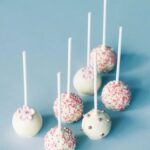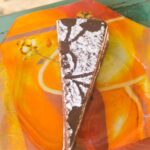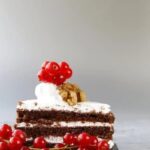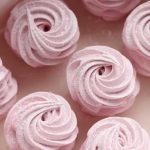Baking and decorating a cake can be a fulfilling and creative endeavor. Whether it’s for a special occasion or simply to indulge in a homemade treat, making your own cake allows you to customize it exactly to your liking.
In this step-by-step guide, we will take you through the process of baking and decorating a cake, from gathering the ingredients and equipment to applying the final decorations. So get ready to put on your apron and let your creativity soar as we delve into the art of cake baking.
There is something truly special about homemade cakes. The aroma that fills the kitchen as they bake, the satisfaction of seeing them rise beautifully in the oven, and the joy of sharing them with loved ones are all part of what makes baking a cake such a delightful experience. What’s even better is that you have full control over what goes into your cake – from choosing high-quality ingredients to adding personal touches that make it uniquely yours.
When it comes to baking a cake, having the right ingredients and equipment is crucial. From flour and sugar to butter and eggs, each ingredient plays an important role in creating the perfect texture and flavor.
We’ll provide you with a comprehensive list of everything you’ll need, along with tips on measuring accurately for consistent results. Additionally, having essential baking tools at hand will ensure that your cake turns out just right, so we’ll walk you through what you’ll need before getting started.
With this step-by-step guide, we aim to empower both beginner bakers looking for their first successful venture and seasoned pros seeking new techniques. Regardless of your skill level or experience in the kitchen, our detailed instructions will help you navigate through each stage of the process seamlessly. So roll up your sleeves and let’s start on this delicious journey towards creating a beautifully baked and decorated masterpiece.
Gathering Ingredients and Equipment
When it comes to baking a cake, gathering the right ingredients and equipment is crucial for a successful outcome. Having a detailed list of ingredients will ensure that you have everything you need before starting the baking process. It is also important to use high-quality ingredients and follow proper measurement techniques to achieve the best results in flavor and texture.
To start with, make sure you have all the basic ingredients such as flour, sugar, eggs, butter or oil, baking powder or baking soda, salt, and milk. Depending on the type of cake you want to bake, you may also need additional flavorings like vanilla extract or cocoa powder. If you plan on making a filling or frosting from scratch, don’t forget to include those ingredients as well.
Properly measuring these ingredients is essential for accurate proportions in your cake batter. Use measuring cups and spoons specifically designed for dry and liquid ingredients respectively. When measuring dry ingredients like flour or sugar, spoon them into the measuring cup without packing it down and level off with a straight edge. For liquids, place the measuring cup on a flat surface and pour until it reaches the desired line.
In addition to gathering all the necessary ingredients, having the right baking equipment is equally important. Make sure you have mixing bowls in various sizes for combining the ingredients. A sturdy whisk or an electric mixer will help in achieving a smooth batter consistency without any lumps.
You will also need cake pans specific to your desired size and shape of cake layers – round or square pans are common options. Don’t forget parchment paper or cooking spray to prevent sticking and ensure easy removal of baked cakes from the pans.
Taking the time to gather all these essential ingredients and equipment before starting will save you from unnecessary hassle during the baking process. It sets you up for success in creating a beautiful homemade cake that not only tastes amazing but also impresses your guests with its professional look. The next step after gathering everything is preparing the cake batter, which we will discuss in the following section.
Preparing the Cake Batter
In order to bake a delicious and moist cake, it is crucial to properly prepare the cake batter. This section will provide you with step-by-step instructions on how to achieve the perfect cake batter consistency and texture.
- Follow the Recipe: Before starting, carefully read through the recipe and select the type of cake that suits your occasion. Whether it’s a classic vanilla or chocolate cake or something more unique like a lemon or red velvet cake, make sure to follow the recipe closely for optimal results.
- Mixing Dry and Wet Ingredients: Begin by mixing all the dry ingredients together in a large bowl. This usually includes flour, baking powder, salt, and sometimes spices like cinnamon or cocoa powder. In a separate bowl, combine all the wet ingredients such as eggs, milk, oil or melted butter, and any flavorings like vanilla extract. Gradually add the wet mixture into the dry mixture while stirring continuously until well combined.
- Incorporating Fats: Fats such as butter or oil are essential for achieving a moist and tender cake texture. Depending on the recipe, you may need to cream softened butter with sugar until light and fluffy before adding other wet ingredients. Alternatively, some recipes call for adding melted butter or oil directly into the wet ingredient mixture.
- Achieving Smooth Batter Consistency: To ensure a smooth batter consistency without any lumps, use an electric mixer at low speed or whisk vigorously by hand until all the ingredients are fully incorporated. Be careful not to overmix as this can lead to a dense and tough final product.
- Enhancing Flavor and Texture: To take your cake batter to the next level, consider incorporating additional flavorings such as citrus zest, flavored extracts (like almond or coconut), or even spices like nutmeg or cardamom depending on your preference. This is also the perfect time to fold in any additions like chocolate chips, nuts, or dried fruits that will complement your chosen cake flavor.
By following these step-by-step instructions for preparing the cake batter, you will be well on your way to creating a delicious and crowd-pleasing homemade cake. Remember to take your time and enjoy the process as you experiment with different flavor variations and add-ins to personalize your creation.
Baking the Cake
Proper Oven Preheating and Pan Preparation
Before you begin baking your cake, it is crucial to ensure that your oven is properly preheated. Preheating the oven allows for even heat distribution, resulting in a consistent bake. Most recipes will specify the required temperature for baking, whether it be 350°F (175°C) for a standard cake or a slightly lower temperature for more delicate cakes. Give your oven enough time to reach the desired temperature before placing the cake inside.
In addition to preheating the oven, proper pan preparation is essential to prevent the cake from sticking and ensure easy removal later on. Start by greasing the pans with either butter, vegetable oil, or cooking spray. Make sure to coat every nook and cranny so that the cake does not stick to any surface.
For added insurance, line the bottom of each pan with parchment paper cut to fit its shape. This extra step will guarantee an effortless release once the cakes are baked.
Achieving an Even Cake Layer and Avoiding Common Baking Mistakes
When pouring your cake batter into the prepared pans, it’s essential to distribute it evenly to achieve uniform layers. One trick is to use a scale or measuring cup to measure out equal amounts of batter for each pan. Another technique is gently tapping each pan on the countertop after filling them with batter. This helps remove any air bubbles and ensures an even layer while baking.
While baking your cake, it’s important not to open the oven door too frequently as this can disrupt heat flow and affect overall baking time. Additionally, resist being tempted to rotate or move your pans during baking unless necessary due to uneven heating in your oven.
Suggested Baking Time and Temperature for Different Cake Sizes
The time required for baking varies depending on various factors such as cake size and type of batter used. As a general guideline, a standard 9-inch (23 cm) round cake typically takes about 25 to 35 minutes to bake at 350°F (175°C). However, it’s important to consult the recipe you are using for specific baking time and temperature instructions. Keep in mind that different cake sizes and shapes may require adjustments in baking time and temperature.
To determine if your cake is fully baked, gently insert a toothpick or cake tester into the center of the cake. If it comes out clean or with just a few crumbs clinging to it, your cake is ready. Remember, underbaking can result in a gooey center while overbaking can lead to a dry and crumbly texture. Practice and experience will help you find the perfect balance for your cakes.
By following these steps for baking your cake, you can ensure that it turns out perfectly moist, flavorful, and evenly baked. The next section will guide you on how to cool, level, and prepare your freshly baked cake for decorating.
Cooling and Levelling the Cake
When it comes to baking a cake, cooling and leveling the cake is a crucial step in the process. This section will outline the importance of allowing the cake to cool completely before decorating and provide tips on how to properly level the cake for a smooth and stable surface.
Firstly, it is essential to emphasize the significance of allowing the cake to cool completely before moving forward with any decorations. Cooling allows the structure of the cake to set, preventing it from crumbling or falling apart when handled. It also helps in retaining the moisture within the cake, resulting in a tender texture.
To cool your cake, start by removing it from the oven and placing it on a heat-resistant surface such as a cooling rack. Let it sit undisturbed for at least 10-15 minutes before attempting to remove it from the pan.
Once the cake has cooled, it is time to level it. Leveling ensures that your cake has an even surface for decorating and prevents any lopsided or unstable layers. The easiest way to level a cake is by using a long serrated knife or a special cake leveler.
Start by placing your hand gently on top of the cooled cake layer, applying slight pressure downward, and slowly guide your knife through its center horizontally. Repeat this process until you have cut through all layers if you are making a layered cake.
Below is a table summarizing key points regarding cooling and leveling cakes:
Cooling and Leveling Tips
| Key Points |
|---|
| Allow cakes to cool completely before handling or decorating. |
| Remove cooled cakes from pans by loosening sides with a butter knife. |
| Level cakes using long serrated knives or specialized cake levelers for even and stable layers. |
| Use a turntable or lazy susan for easier leveling and frosting. |
Choosing and Preparing Frosting or Filling
When it comes to choosing the right frosting or filling for your cake, there are endless possibilities. Buttercream, cream cheese, ganache – the options are truly limitless. The key is to select a frosting or filling that complements the flavor of your cake and suits the occasion.
For those who prefer a classic and versatile option, buttercream frosting is a popular choice. It can be easily flavored and colored to create various effects on your cake. Cream cheese frosting, on the other hand, adds a tangy and creamy element that pairs well with carrot cakes or red velvet cakes. Ganache, made from chocolate and cream, provides a rich and decadent option for chocolate lovers.
While store-bought frostings are readily available, making your own homemade frosting allows you to have full control over the ingredients and flavors. Here’s a simple recipe for buttercream frosting:
Ingredients:
- 1 cup unsalted butter (room temperature).
- 4 cups powdered sugar.
- 2 teaspoons vanilla extract.
- 2-3 tablespoons whole milk or heavy cream.
Instructions:
- In a mixing bowl, beat the softened butter until creamy.
- Gradually add powdered sugar, one cup at a time, while continuing to beat on low speed.
- Add vanilla extract and milk/cream to the mixture.
- Increase speed to medium-high and beat until light and fluffy.
- Adjust consistency by adding more milk/cream if needed.
Once you have selected your desired frosting or filling, prepare it ahead of time so it can be easily applied when decorating the cake. Make sure to set aside enough quantity for both filling in between cake layers as well as covering the exterior of the cake.
In addition to basic frostings/fillings, consider adding flavor variations or decorative additives such as extracts (e.g., almond or lemon), food coloring for vibrant hues, or edible decorations like sprinkles or fondant shapes. These little touches can elevate the overall presentation and taste of your cake, making it a feast for both the eyes and the palate.
| Frosting/Filling Option | Description |
|---|---|
| Buttercream | A classic and versatile option that can be easily flavored and colored. |
| Cream Cheese Frosting | Provides a tangy and creamy element that pairs well with carrot cakes or red velvet cakes. |
| Ganache | A rich and decadent option made from chocolate and cream, perfect for chocolate lovers. |
Applying Frosting and Decorations
Frosting Techniques
When it comes to applying frosting on your cake, there are several techniques you can use depending on the desired outcome. One popular technique is crumb coating, which involves applying a thin layer of frosting all over the cake to lock in any loose crumbs before adding the final layer. This ensures a smooth and perfect finish for your cake.
To crumb coat your cake, start with a small amount of frosting and spread it evenly across the entire surface using an offset spatula. Once the crumb coat is applied, refrigerate the cake for about 15 minutes to allow it to set before applying the final layer.
For those looking for a flawless finish, smooth frosting is another technique to consider. To achieve this look, make sure your frosting is at room temperature and spreadable. Start by applying a generous amount of frosting on top of the cake, then using your offset spatula, begin smoothing from the center outward in gentle motions. Continue this process until you have achieved a smooth and even layer of frosting on all sides of the cake.
Piping and Decorative Techniques
If you want to take your cake decoration skills to the next level, piping can add intricate and eye-catching designs. Piping involves using a pastry bag fitted with different tips to pipe buttercream or other frostings onto the cake in various patterns or shapes. Some simple piped designs include rosettes, dots, stars, and leaves. To pipe successfully, hold the pastry bag firmly with one hand while applying even pressure with the other hand to control the flow of frosting.
In addition to piping techniques, there are various decorative techniques you can explore to enhance the appearance of your cake. For example, you can use fresh fruits like berries or sliced citrus fruits as garnishes for a fresh and vibrant touch. Sprinkles or edible pearls can be used to add texture and color to the cake.
Edible flowers, such as pansies or violets, are also a beautiful and unique way to decorate a cake. The possibilities are endless, so feel free to let your creativity shine.
Garnishing with Edible Decorations
Apart from piping and decorations, garnishing your cake with additional edible decorations can add that extra wow factor. Consider using edible glitter dust to give your cake a sparkling finish. Chocolate shavings or curls can be created by using a vegetable peeler on a block of chocolate and adding them to the top or sides of the cake. If you want something truly extravagant, you can even create edible sculptures or figurines out of sugar paste or fondant.
Remember, decorating a cake is not only about making it visually appealing but also about making it delicious. Don’t hesitate to add some final touches like drizzling caramel or chocolate sauce over the top of your frosted cake for an enticing flavor combination.
Now that you have learned the art of applying frosting and decorations, it’s time to let your imagination run wild and create a masterpiece that will impress everyone who takes a bite.
Troubleshooting and Tips for Success
While baking and decorating a cake can be a delightful experience, it is not uncommon to encounter a few challenges along the way. In this section, we will address some common issues faced while baking and decorating cakes and provide helpful tips and solutions to ensure your success.
1. Cracked Tops:
Cracked tops can be disappointing, especially after putting in all the effort. However, there are ways to prevent them. One of the main reasons for cracked tops is usually an oven that is too hot. To avoid this, double-check your oven temperature with an oven thermometer before baking. Another reason could be overmixing the batter or not using enough liquid ingredients. Be sure to follow the recipe instructions carefully and mix until just combined.
2. Collapsed Layers:
If your cake layers collapse in the middle or sink after removing from the oven, it could be due to several factors. Overmixing the batter can cause trapped air bubbles, which then collapse during baking. Make sure to mix gently and avoid over-beating. Similarly, opening the oven door during baking can cause temperature fluctuations and lead to collapsed layers.
Resist the temptation to peek. Lastly, underbaking can also result in collapsed layers. Always use a toothpick or cake tester to check if the center is fully cooked before removing from the oven.
3. Achieving Smooth Frosting:
Sometimes achieving a smooth frosting finish on your cake can seem challenging, but with a few tricks, you’ll master it in no time. First, make sure your cake has cooled completely before applying frosting as warm cakes tend to crumble easily when frosted. Next, apply a thin layer of frosting all over the cake called a “crumb coat.”
After chilling for 10-15 minutes in the refrigerator or freezer to set that layer, you can then apply the final layer of frosting. To achieve a smooth finish, use an offset spatula dipped in warm water and run it over the surface of the cake in long, smooth strokes.
4. Avoiding Dry Cakes:
Dry cakes can be disappointing, but there are a few measures you can take to ensure a moist and tender result. First, make sure you measure your ingredients accurately, as too much flour or dry ingredients can lead to a dry texture.
Additionally, don’t overbake your cake; always check with a toothpick for doneness around the suggested baking time. Adding moisture to your batter, such as buttermilk, sour cream, yogurt, or even applesauce for some recipes, can also help retain moisture in the cake.
Remember that practice makes perfect when it comes to baking and decorating cakes. Don’t be discouraged if your first attempt doesn’t turn out exactly as planned – learning from your mistakes is part of the process. By keeping these troubleshooting tips in mind and following the step-by-step guide provided throughout this article, you’ll be well on your way to creating beautifully decorated homemade cakes that will impress friends and family alike.
Conclusion
In conclusion, the process of baking and decorating a cake can be a truly joyous and rewarding experience. Throughout this guide, we have discussed the importance of using high-quality ingredients, proper techniques, and essential equipment to ensure successful results. From preparing the cake batter to applying the frosting and decorations, every step has been carefully outlined to help you achieve a beautifully decorated cake.
One of the joys of baking your own cake is the ability to personalize it according to your taste and occasion. Whether it’s a birthday, wedding, or any other special event, creating a homemade cake allows you to add your own unique touch. By experimenting with different flavors, frostings, and decorations, you can unleash your creativity and create a masterpiece that will impress your family and friends.
The satisfaction that comes from presenting a homemade cake cannot be compared to store-bought alternatives. The pride in seeing your creation come together is immeasurable. So take this guide as an opportunity to embrace your inner baker, try new recipes, and explore various decorating techniques. With practice and patience, you will soon become skilled in the art of baking and decorating cakes. So go ahead, indulge in the joy of creating something deliciously beautiful.
Frequently Asked Questions
What do I need to bake a cake and decorate it?
To bake a cake and decorate it, you will need several ingredients and tools. For the cake itself, you will need flour, sugar, eggs, butter or oil, milk or water, baking powder or baking soda, and any flavorings or additions like vanilla extract or cocoa powder.
Additionally, you will need a mixing bowl, an electric mixer or whisk for mixing the batter, a cake pan to bake the cake in, and an oven for baking. For decorating the cake, you will need icing or frosting of your choice, food coloring if desired, piping bags and tips for creating various designs or patterns on the cake’s surface, spatulas for spreading icing smoothly onto the cake’s exterior or filling between layers, and assorted decorations such as sprinkles or edible pearls.
Can I bake a cake and decorate it the same day?
Yes, it is possible to bake a cake and decorate it on the same day. However, this depends on factors such as the complexity of the decoration design and how much time you have available. Baking a cake usually takes around 30 minutes to an hour depending on the recipe and size of the cake.
After allowing it to cool completely (which may take another hour), you can proceed with decorating. The length of time required for decorating varies greatly depending on intricacy and skill level. It is important to consider your own schedule and plan accordingly to ensure that you have enough time to both bake and decorate the cake if doing so within one day.
How do you prepare a cake before decorating?
Before decorating a cake, it is essential to properly prepare it to ensure optimal taste and appearance. First and foremost is allowing the baked cake to cool completely before attempting any decoration. This prevents melting of icings or frostings and allows for easier handling when spreading fillings between layers. If necessary, carefully slice off any uneven or domed tops from each layer using a serrated knife to create even surfaces for stacking multiple layers together later on.
Applying a crumb coat is also a helpful step. This involves spreading a thin layer of icing over the entire cake to seal in any loose crumbs and create a smooth foundation for further decoration. Once the crumb coat has set, you can proceed with applying the final layer(s) of icing or frosting and adding any desired decorations.

Welcome to my blog about home and family. This blog is a place where I will share my thoughts, ideas, and experiences related to these important topics. I am a stay-at-home mom with two young children. I hope you enjoy reading it! and may find some helpful tips and ideas that will make your home and family life even better!





